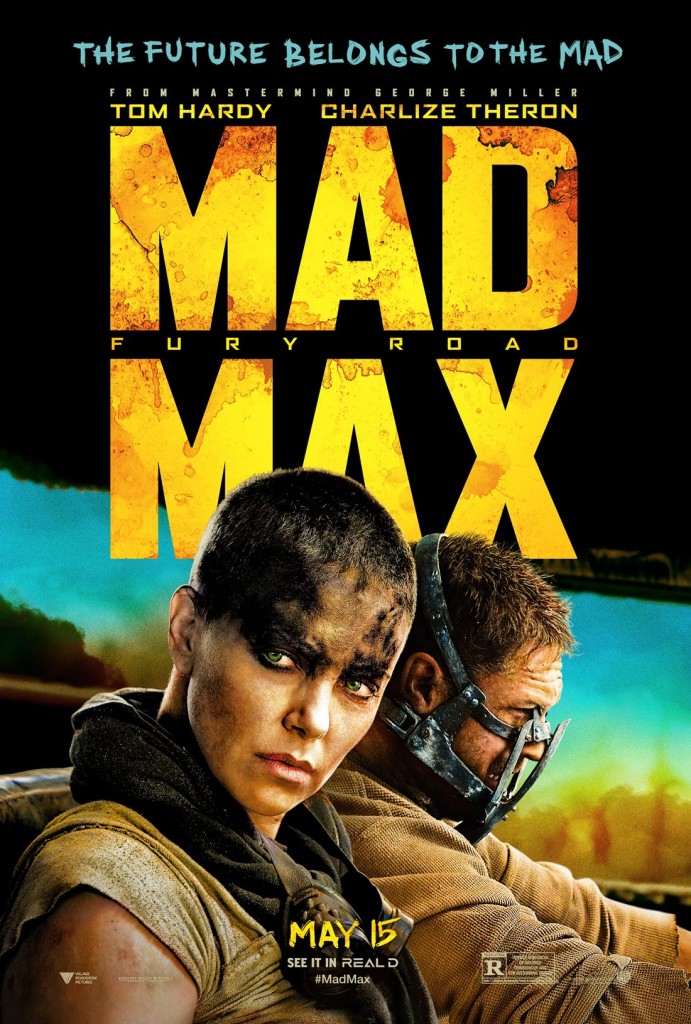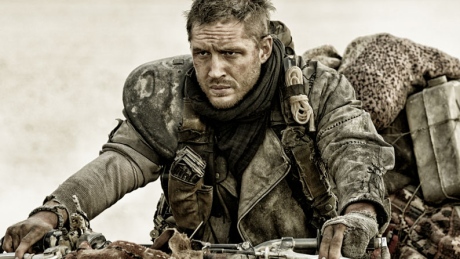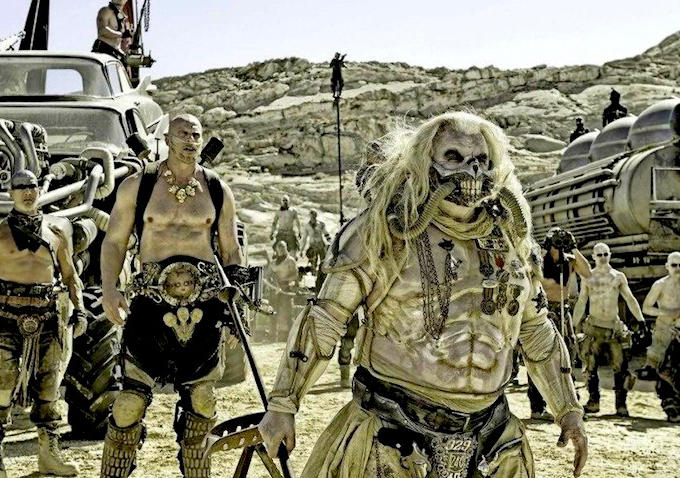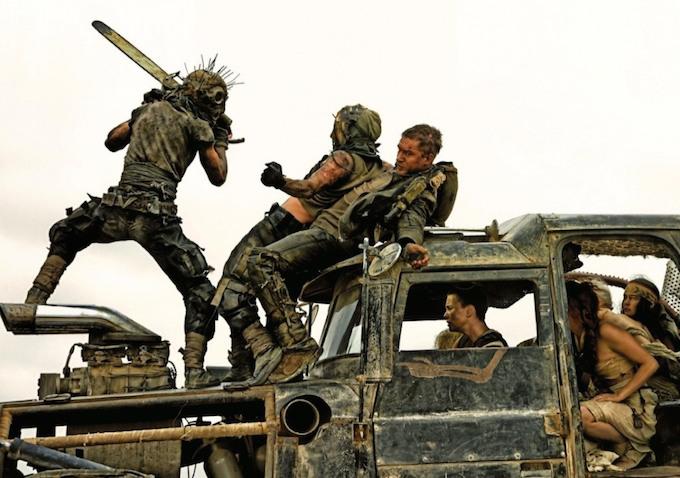No one told George Miller that we don’t need another hero, and Mad Max: Fury Road is proof that was the right call. After years in development hell, his eponymous futuristic lawman returns in a shamelessly campy, but strangely beautiful fantasy chase epic. The amount of imagination put into his desert badlands is as impressive as ever, and Max is now being portrayed by Tom Hardy in a story where- oddly enough- he acts as the deuteragonist and plays the sidekick to a new post-apocalyptic hero.
That’s not to say Max gets pushed to the side, the film is told through his viewpoint and his character evolves beautifully over the course of Road. However, it’s Charlize Theron’s Imperator Furiosa who leads the main band and plans most of the action, seeking to liberate a group of prized female breeding slaves from the harem a tyrant named Immortan Joe (previous Mad Max villain actor Hugh Keays-Byrne).
Joe runs his empire through control of a massive water supply, an army of pale creatures called War Boys, and a rigid personality cult complete with branding his underlings. I love his design- as a weakened and aging ruler who communicates through an intimidating Vader-style face mask that modifies his voice, maintaining his image is crucial.
On top of having to deal with the guilt over failing to save his family (continuity from the original 1980 classic), Max is captured and forced to unwillingly transfuse his blood into one of Joe’s Boys, the overzealous Nux (Nicholas Hoult). He’s soon rescued by Furiosa and the Wives after she takes her big rig off course towards liberation.
Fury Road adds some sly commentary on gender politics under the radar. Max is cast initially in a damsel role before he takes more of a co-leadership position alongside Furiosa. The Wives gradually start kicking more ass, and the Vulvalini biker clan who join Max and friends later on are a rare example of older female heroes on the big screen. Miller manages to work in a lot of diversity for a franchise mostly popular among older male audiences, and just about every main hero and many of the villains gets a moment to either shine in a gleefully violent action sequence or die horribly (and often hilariously).
The aesthetic is literally every heavy metal album cover come to life, complete with bonuses for any hot rod enthusiasts out there. Steering wheels are treated as if they were holy relics (this gives us a funny scene where two War Boys fight over one). Monstrous, skull ornamented automobiles breathe fire and sport massive spikes from their sides as part of Joe’s army, complete with a drum procession and a guitarist whose instrument acts as a flame thrower in front of a rig for the sound system, because why not? Cinematographer John Seale also worked on the first Harry Potter film, and he does a fantastic job framing some intense and kinetic chase scenes in such a way that the audience can still keep up.
Still, as happily decadent as Fury Road is, there’s more than enough warmth among the protagonists and interesting ideas to keep it from being a run-of-the-mill dumb explosion fest. The vague question “who killed the world?” is inquired by a number of characters, and perhaps Miller means it to be the patriarchy.
Nux believes he lives, dies and will live again in a warrior’s afterlife if he valiantly sacrifices himself for Immortan Joe, Furiosa speaks of holding on to hope and Max opens the film by asking if it’s him or the world that’s really gone mad. For a mayhem filled death chase, those are some pretty heavy themes. There’s plenty to love about Mad Max’s return from both a highbrow and lowbrow perspective.




